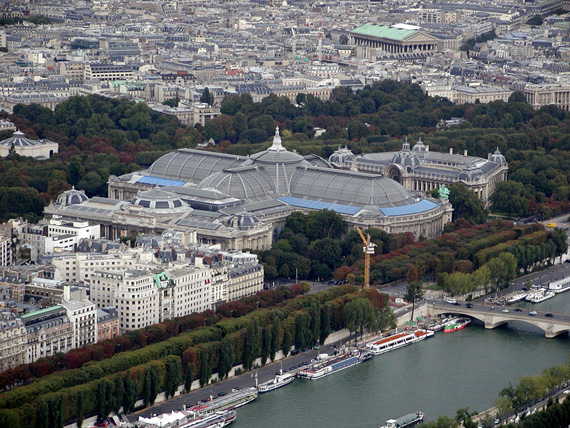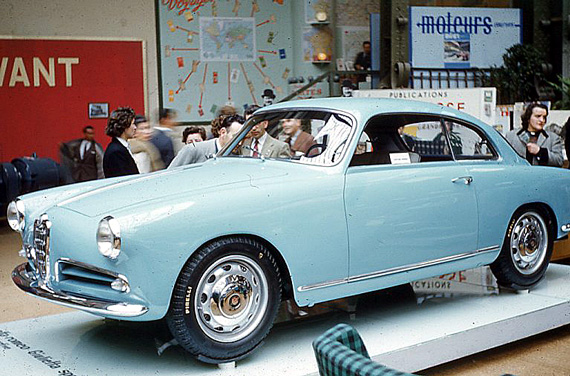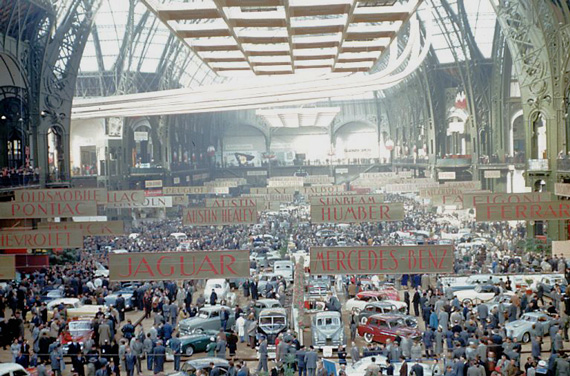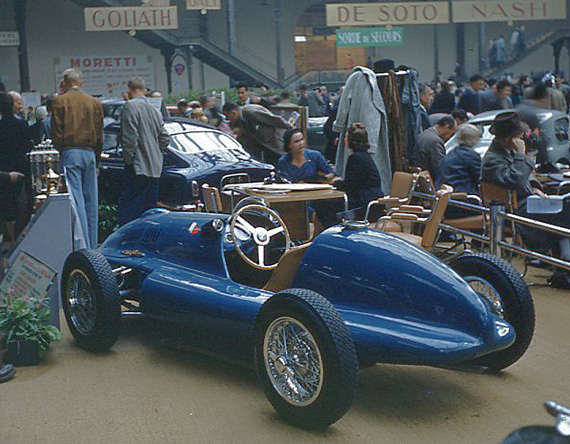By Pete Vack
Photos by Gerald Vack
The 1954 Paris Auto Show (or Salon de l’Automobile), was held from October 7th to the 17th, late in the season but close enough to the next year to draw out the new cars planned for the year 1955. If not the most important auto show of the year, it had a reputation of being the most glamorous.
At that time, the show was still held at the magnificent Grand Palais on Port A, Avenue Eisenhower. Built in 1900, the Grand Palais was and remains a marvel of “Belle Epoque” engineering; massive glass roofs supported by an ironwork structure. What better showplace for the new automobile.
The first auto show was held in Paris in 1898; in 1910 the show moved to the new Grand Palais. Up until 1986 it was called Salon de l’Automobile; it took the name Mondial de l’Automobile in 1988. It was held annually through 1976, after which it has been biennial, and the event was moved to the Paris Expo at the Porte de Versailles.

The Grand Palais is particularly attractive at night while lit from inside. Photo copyright Gérard-Ducher.
At some point during in early October of 1954, the Editor’s uncle, Gerald Vack, visited the show with a new Leica camera he’d purchased in Germany, where he was stationed with the U.S. Army. A sports nut, but not a car enthusiast, Gerry realized that his car enthusiast brothers back in the States would like to see some of the cars at the show. His new Leica was loaded with Kodachrome 35 mm film, still rare and expensive as until late in 1954, the film was purchased along with the cost of the development. Back in the States, once shown, Gerry filed the show scenes with other slides and forgot about them until his nephew pestered him about it years later.
What we have below are not images taken by a professional photographer; Gerry was also hampered by the huge crowds that journalists could avoid by attending press-only shows. As floor space at the Paris show was extremely expensive, many of the smaller manufacturers had tiny, one=car stands tucked in a back row, further hampering good photography. He knew very little about the cars he photographed. And we are lucky, for not only does Kodachrome have a tremendous shelf life and is remarkably fade resistant, but in searching through contemporary material and the Internet, we see that color images of the show are fairly rare. Thanks to Gerry remembering the guys back home!
The Grand Palais, with its glass ceiling, provided great natural light for the show. In this scene, one can see how many manufacturers were growing and adding a wide range of models to suite the public. Wriiting for ‘Automobile Review’, Gordon Wilkins reported that “The accelerated pace of development in the world’s automobile industries has produced a great increase in the number of new and improved models…” But at the same time, the increased complexity and cost of tooling was also forcing mergers as small firms could no longer afford to compete.
The 2.5 Liter unblown Formula One went into effect in 1954, and one of the lesser known provisions was the alternate use of a supercharged 750 cc engine. One of the few firms to try to compete in this manner was Deutsch Bonnet, who dusted off the old Monomille and upgraded the Panhard Dyna engine with a supercharger. But the power to weight ratio was only about 250 per ton, while the 2.5 liter cars were good for 400 per ton. French Porsche and DB driver Claude Storez raced the car at Pau in 1955, but it was too underpowered to be effective.


